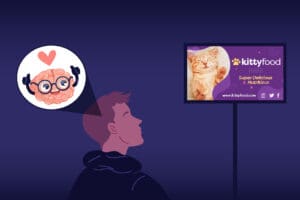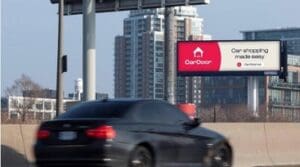

By Julia Cramer, Adomni Content Specialist
Synopsis: OOH coupled with digital proves to be one of the most underrated ad types driving exceptional reach.
The Out of Home Advertising Association of America (OAAA), in partnership with Comscore, recently released its new survey, “Consumer Insights: OOH and Online Activation,” which concentrated on audiences’ actions taken and ad recall after viewing different forms of advertising. The survey proved OOH ads deliver a similar or more significant share of action among audiences than other ad mediums despite OOH accounting for 4.1% of total media ad spend across ad channels in 2021.
While the OAAA survey outcomes are meaningful, it does not astonish those operating in the OOH sector, especially with a surplus of studies and reports proving OOH coupled with digital is one of the most underrated ad types driving exceptional reach. With eye-catching, impressive-sized screens, it takes mass amounts of effort for audiences to overlook out-of-home ads, not to mention impossible to skip or block them.
According to a study done by OAAA and Nielson, 90% of Americans noticed some form of OOH ad. In addition, WARC found that digital out-of-home (DOOH) advertising cuts through ad blindness more than other media types with uninterrupted exposure earning it the superlative ‘most likely to be memorable among advertising types.’ How? With advancements in programmatic, the oldest form of advertising is soaring to new heights – making OOH more visible, flexible, fast, immersive, and measurable, or better referred to as the optimal platform for leading marketers.
When programmatic meets OOH, ads can become exceedingly relevant, engaging, and memorable. A research study, “The Moments of Truth,” commissioned by Clear Channel, JCDecaux UK, and Posterscope, revealed a 17% more effective audience response for DOOH. Furthermore, the study uncovered that a consumer’s brain response was 18% more heightened by relevant content in DOOH campaigns, leading to a 17% increase in ad recall, which delivered a 16% sales uplift. Additionally, the study found that ads showing a relevant brand or product at the right time of day sparked a 12% uptick in brain response. An ad showing unique and relevant content such as environmental triggers or live updates developed an 18% increase in brain response. Combining these two factors creates what the study refers to as the “nirvana state,” forging a 32% boost in brain response.

For example, CarDoor’s campaign focused on hyperlocal targeting to reach potential car buyers. The simple online car buying platform decided the most suitable places to tailor its messaging were in high-density areas near auto repair shops, dealerships, and DMVs. CarDoor selected the most advantageous DOOH screens to leverage where prospective car buyers would most likely see their ad using a contextual location-based approach.
Out-of-home (OOH) advertising continues to outperform traditional forms of media such as TV, radio, video, and banner ads. Complementing the one-to-many medium of OOH with programmatic capabilities pushes digital out-of-home as the optimal platform for leading marketers. And as OOH programmatically evolves, advertisers and companies will see massive potential in its capabilities: precise targeting, dynamic displays, smarter measurements, AR, etc., to name a few.
[wpforms id=”9787″]
Paid Advertisement

















